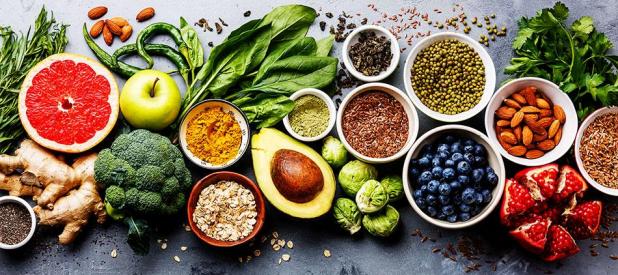
Not all healthy food is 'good' when it comes to irritable bowel syndrome.
Good and bad foods for IBS
Choosing low-FODMAP (fermentable oligosaccharides, disaccharides, monosaccharides and polyols) foods, such as bean sprouts, can provide relief for those with irritable bowel syndrome.
Irritable bowel syndrome, previously referred to as spastic colon or nervous bowel, is a common disorder affecting the large intestines. The Mayo Clinic says individuals with IBS experience cramping, abdominal pain, bloating, gas, diarrhea or constipation.
IBS is a chronic disorder, which means it can last for years. Doctors may recommend dietary changes to help treat symptoms.
Dietary changes typically must be instituted for several weeks to see if symptoms improve. Dietician and researcher Gail Cresci, PhD, RD, often recommends easily digestible foods, an approach to eating known as a low-FODMAP diet.
The Cleveland Clinic says FODMAP are carbohydrates that are not easily digested nor absorbed by the small intestines.
Researchers also found they increase the amount of fluid in the bowel. Undigested carbohydrates are later metabolized by intestinal bacteria in the colon, which produces excess gas. The fluid and gas in the bowel leads to bloating and can cause diarrhea and/or constipation as well as abdominal pain.
Low-FODMAP choices can mitigate IBS symptoms, including pain. Harvard Medical School says one study found that 76% of IBS patients following the low-FODMAP diet reported improvement with symptoms.
Foods to avoid
When following a low-FODMAP diet, one should consume less of these items:
—Lactose, which is found in cow’s milk, custard, ice cream, pudding, cottage cheese, ricotta and mascarpone.
—Fructose from apples, pears, peaches, cherries, mangoes, pears and watermelon, as well as sweeteners like honey and agave nectar.
—Fructans in vegetables, such as artichokes, asparagus, Brussels sprouts, broccoli, beets, garlic and onions, and also grains such as wheat and rye.
—Galacto-oligosac-charides from chickpeas, lentils, kidney beans, soy products and broccoli.
—Polyols from apples, apricots, blackberries, cherries, nectarines, pears, peaches, plums, watermelon, cauliflower, mushrooms, snowpeas and several sweeteners, such as sorbitol and xylitol.
Foods to enjoy
The idea behind a low-FODMAP diet is to limit problematic foods in dietary categories. That means eating foods that are less likely to cause pain, which can include:
—Lactose-free milk, rice milk, almond milk, coconut milk, hard cheeses and lactose-free yogurts.
—Bananas, blueberries, cantaloupe, grapefruit, honeydew, kiwi, lemon, lime, oranges and strawberries.
—Bamboo shoots, bean sprouts, bok choy, carrots, chives, cucumbers, eggplant, ginger, lettuce, olives, parsnips and turnips.
—Beef, pork chicken, fish, eggs and tofu.
—Almonds, macadamia, peanuts, pine nuts and walnuts.
—Oat, oat bran, gluten-free pasta and quinoa.
Individuals can speak with a dietician or a doctor to experiment with dietary changes in an effort to manage their IBS. Some people may tolerate certain “safe” foods better than others.
The Canadian Society of Intestinal Research suggests taking a soluble fiber supplement prior to a potential trigger meal, which may protect against symptoms. Try to avoid oil in cooking, and rely on grilling, baking, steaming or broiling instead.
Plenty of low-FODMAP diet plans can be found online. Individuals can do their research and find foods they like that don’t trigger symptoms of IBS.
